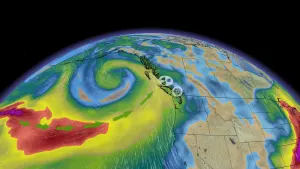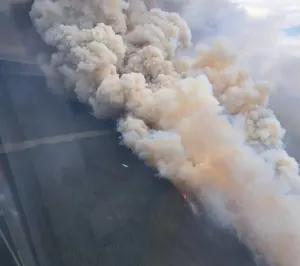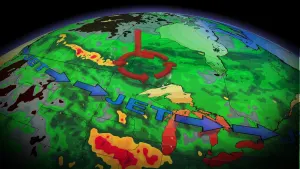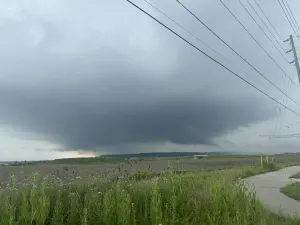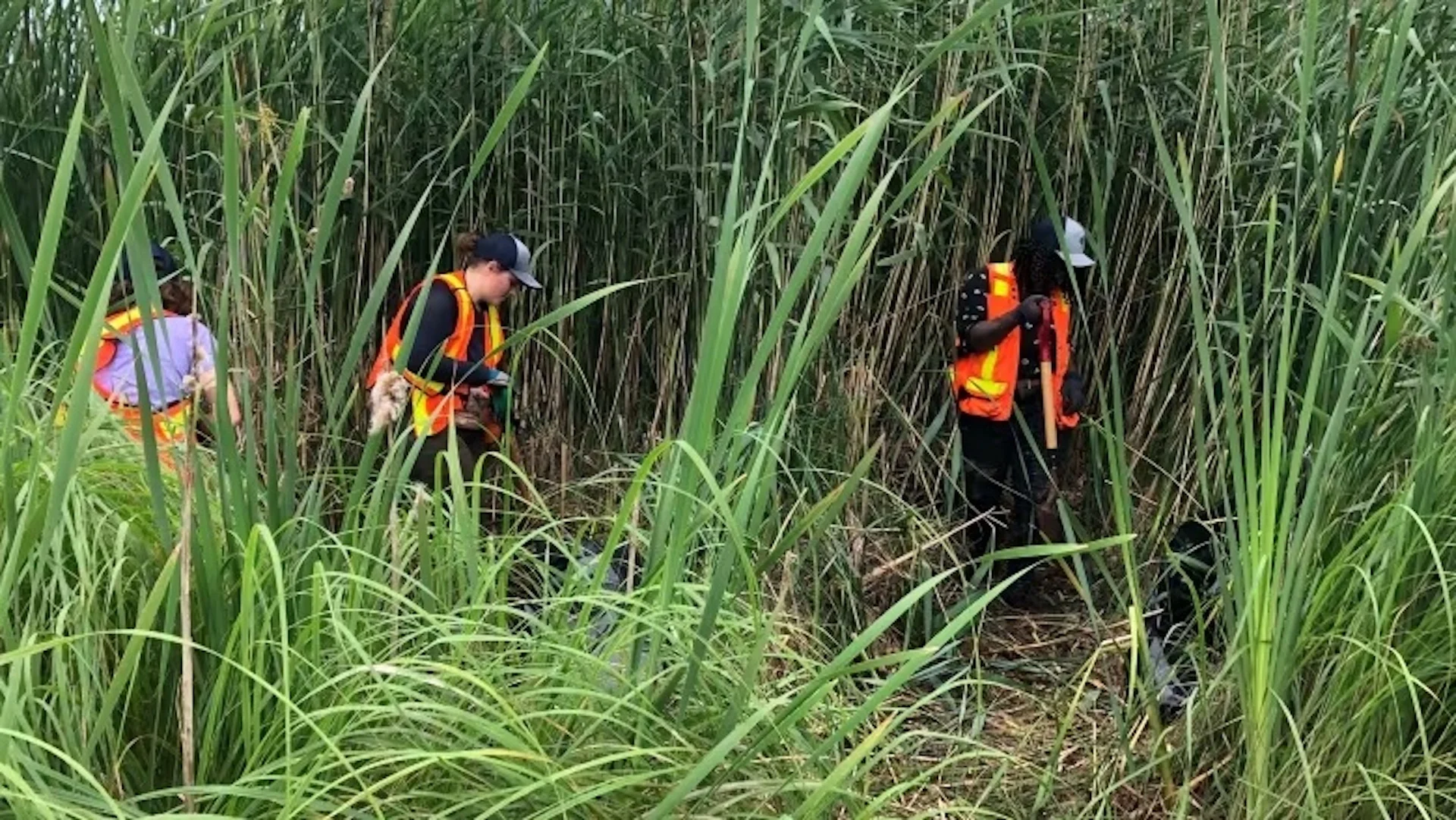
Fighting phragmites: One of Canada's worst invasive species now in N.B.
Crews from different conservation groups put on their safety vests, rubber boots, and gloves and headed into the marsh along the Petitcodiac River in Riverview Thursday.
They were on a mission to find and remove phragmites, one of Canada's most notorious invasive species also known as the European common reed.
Phragmites, a perennial reed grass that originated in Eurasia and thrives in northern climates and wetlands, is an invasive species now growing in New Brunswick.
SEE ALSO: Identifying Ontario's dangerous plants
Paula Noel, New Brunswick program director with the Nature Conservancy of Canada, said the tall grass plant grows so densely that "it creates a monoculture that kind of shades out or out-competes all of the other types of plants you would normally find in a wetland."
Noel said the plant has done significant damage in parts of Ontario and Quebec where it spread for many years and "has created huge impacts to wildlife habitat there."
Like a lot of plants, phragmites produce a chemical through their roots, inhibiting other plants from growing.

Paula Noel, New Brunswick program director with the Nature Conservancy of Canada, said conservation groups still don’t know the impact this plant is having on wildlife in New Brunswick. (Maeve McFadden/CBC)
"It kind of changes the soil to favour itself and nothing else," Noel said.
If phragmites are left to spread, wetlands are at risk of losing a variety of plants and different areas for birds and other wildlife to nest and feed.
Noel said parts of southern Ontario have lost "a lot" of habitat for species at risk of extinction because of the spread of this invasive grass.
Ducks and other waterfowl have been crowded out by this plant in southern Ontario. So, too, have been turtles, which are a species at risk.
Turtles spend part of their life in the water and part on land, explained Noel.
"They need to come on land to lay their eggs and reproduce," she said.
But in parts of Ontario, turtles are no longer able to physically move across the marsh because this grass is growing so densely.

Michelle Norceide of the Petitcodiac Watershed Alliance is seen here trying to remove the invasive phragmites from along the Petitcodiac River. (Maeve McFadden/CBC)
Noel said conservation groups still don't know the impact this plant is having on wildlife in New Brunswick because "it's fairly new."
Employees from the New Brunswick Invasive Species Council, the Petitcodiac Watershed Association and the Fundy Biosphere Region are working together to map and start controlling the invasive plant.
Noel said they have been mapping the species in New Brunswick for five years and are seeing it "rapidly increasing" in southeast New Brunswick.
Although the plant is found across the province, Moncton and Riverview are a "hot spot" for the plant.
"We're starting to see little satellite populations pop up along the highways, interestingly around industrial parks," she said. "We're kind of wondering if the plants are being brought in from other parts of the country."
WATCH: One of world's most invasive plants is being widely sold at garden centres
Noel said the groups are working to map where the grass is found in the province, where it's moving to and how it's getting moved around.
"We can start to address those pathways with groups that are certainly unintentionally moving this plant from place to place."
Clarissa Hoffman, project manager for the New Brunswick Invasive Species Council, organized Thursday's event to cull the grass along the Petitcodiac River.
She said the best way to identify invasive phragmites is by height because "it stands so much taller, up over the rest of the marsh."
Hoffman said the plant is typically two or three feet taller than other plants. It also has a "big floppy seed head" in the summer that will turn purple at the end of August.
Hoffman worked with a crew using shovels to dig up the plant and cut the stem below the surface to get some of the roots out.

Clarissa Hoffman, project manager for the New Brunswick Invasive Species Council said the best way to identify invasive phragmites is by height because 'it stands so much taller, up over the rest of the marsh.' (Maeve McFadden/CBC)
"The main way this spreads is by its roots," she said.
Hoffman said the team was "careful" not to drop any pieces of the root before putting them into garbage bags because even a small piece can "create an entirely new system."
As marshes erode, Hoffman said pieces of the root system break off and the plant spreads.
"That's why it's such a bad spot here on the marsh, in Riverview, in Moncton along the Petitcodiac," she said. "We're worried it's going to flow downstream."
Another crew worked to remove the plants in a larger patch found along the riverbank using chainsaws to cut down the plants.
Those cut plants will be covered with a tarp.
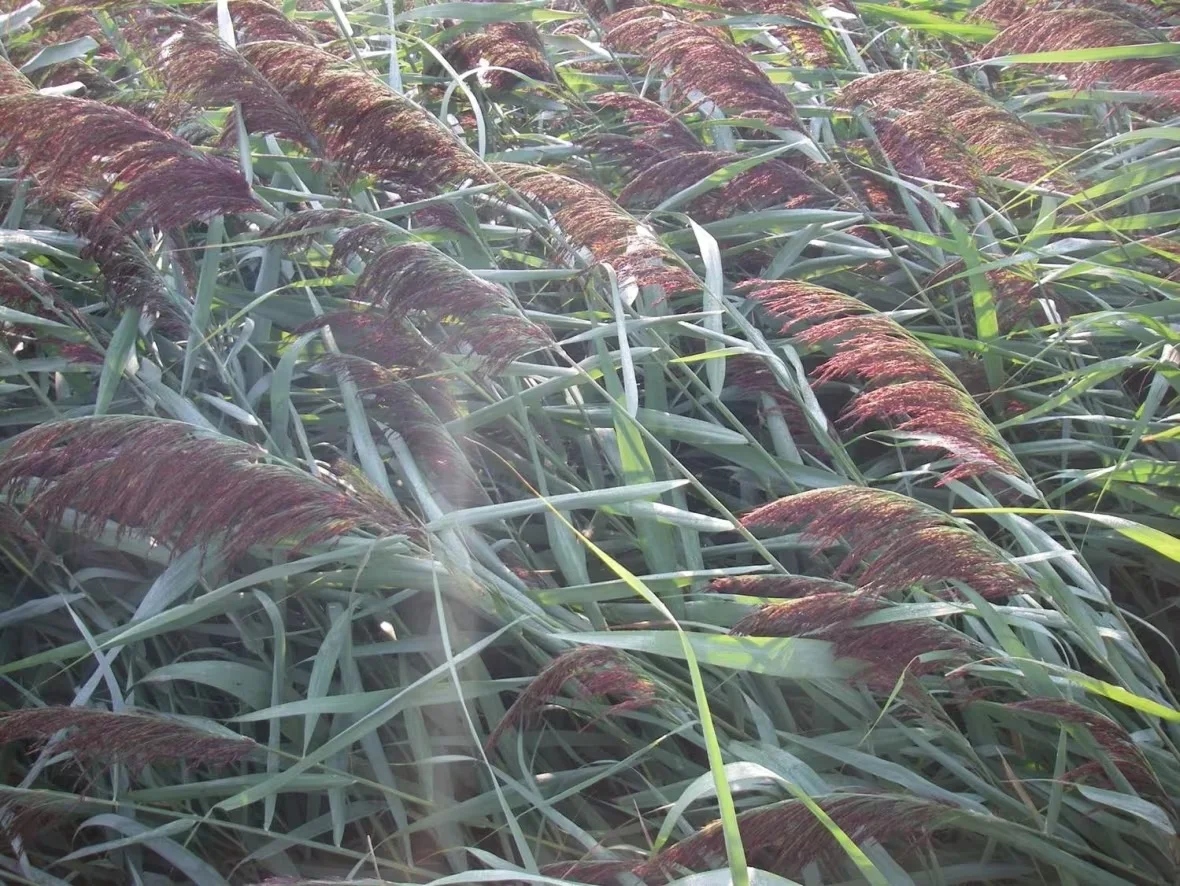
Phragmites, a perennial reed grass that originated in Eurasia and thrives in northern climates and wetlands, is an invasive species now growing in New Brunswick. (Nature Conservancy of Canada)
"It's important to test the different techniques to see how the plants respond here in New Brunswick," said Noel.
She said they will keep monitoring the area for the next couple of years.
"We're really testing a couple of techniques today, but there is likely a bigger initiative and plan that's going to be made to get it under control in this part of the region."
The New Brunswick Invasive Species Council is working with the city of Moncton to develop plans to control the invasive species.
Noel said the public can help map the growth of phragmites in the province by using the iNaturalist app or by contacting the New Brunswick Invasive Species council.
Thumbnail courtesy of Maeve McFadden/CBC.
The story was written by Maeve McFadden and published for CBC News.






